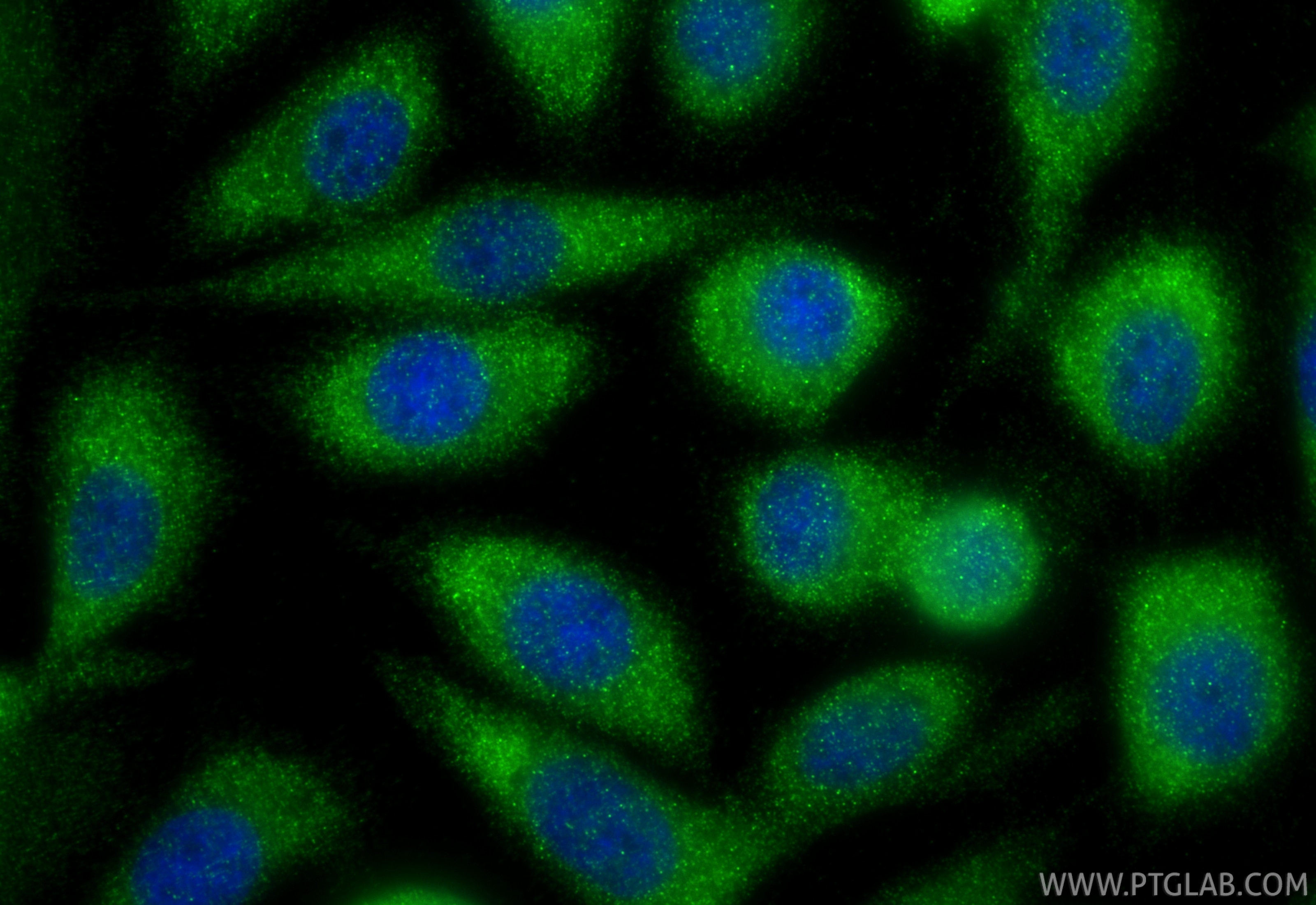Tested Applications
| Positive IHC detected in | mouse testis tissue Note: suggested antigen retrieval with TE buffer pH 9.0; (*) Alternatively, antigen retrieval may be performed with citrate buffer pH 6.0 |
| Positive IF/ICC detected in | PC-3 cells |
Recommended dilution
| Application | Dilution |
|---|---|
| Immunohistochemistry (IHC) | IHC : 1:250-1:1000 |
| Immunofluorescence (IF)/ICC | IF/ICC : 1:125-1:500 |
| It is recommended that this reagent should be titrated in each testing system to obtain optimal results. | |
| Sample-dependent, Check data in validation data gallery. | |
Product Information
84064-6-RR targets TICAM2 in IHC, IF/ICC, ELISA applications and shows reactivity with human samples.
| Tested Reactivity | human |
| Host / Isotype | Rabbit / IgG |
| Class | Recombinant |
| Type | Antibody |
| Immunogen |
Peptide Predict reactive species |
| Full Name | toll-like receptor adaptor molecule 2 |
| Calculated Molecular Weight | 27 kDa |
| GenBank Accession Number | NM_021649 |
| Gene Symbol | TICAM2 |
| Gene ID (NCBI) | 353376 |
| RRID | AB_3671634 |
| Conjugate | Unconjugated |
| Form | Liquid |
| Purification Method | Protein A purfication |
| UNIPROT ID | Q86XR7 |
| Storage Buffer | PBS with 0.02% sodium azide and 50% glycerol, pH 7.3. |
| Storage Conditions | Store at -20°C. Stable for one year after shipment. Aliquoting is unnecessary for -20oC storage. 20ul sizes contain 0.1% BSA. |
Background Information
TICAM2, also named TIRAP3, TIRP, and TRAM, is involved in IL1-triggered NF-kappa-B activation, functioning upstream of IRAK1, IRAK2, TRAF6, and IKBKB. Physically bridges TLR4 and TICAM1 and functionally transmits LPS-TRL4 signal to TICAM1. TICAM2 is involved in LPS-TLR4 signaling to regulate the MYD88-independent pathway during the innate immune response to LPS.
Protocols
| Product Specific Protocols | |
|---|---|
| IF protocol for TICAM2 antibody 84064-6-RR | Download protocol |
| IHC protocol for TICAM2 antibody 84064-6-RR | Download protocol |
| Standard Protocols | |
|---|---|
| Click here to view our Standard Protocols |






